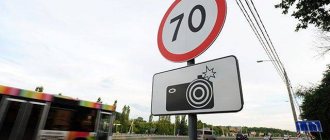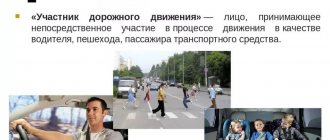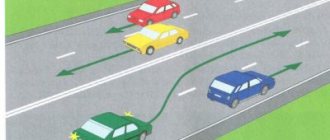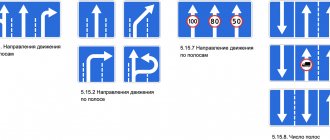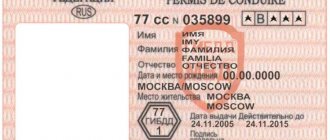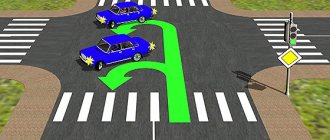Speed in free driving conditions
In free conditions, when the road is relatively empty and you can choose the speed at your own discretion, it would seem that everything is simple. If you follow the traffic rules, then this is 60 km/h in the city, 80 km/h on some city highways, 100 km/h on the Moscow Ring Road, 90 km/h outside the city and 110 km/h on the highway. Well, for those who like to play cat and mouse with the law, you can add those same “duty-free” 20 km/h to these values - there are no fines below this excess. But I’m not talking about fines now, but about safety. Let's imagine that there are no speed limits, like, say, on the autobahns in Germany. This means you can drive at any speed with impunity. At what speed is it safe to drive?
Safety = availability of reserve
Let us remember that one of the conditions for performing a maneuver is the presence of a thrust reserve. And that engine thrust - torque - depends on the tachometer readings (see the article “Driving safety and engine torque”). But the engine’s ability to accelerate a car also depends on speed: the closer the car’s speed is to maximum, the more difficult it is to accelerate . The car accelerates well at low speeds, and as it approaches top speed, acceleration becomes progressively slower. By the way, a few years ago, in the technical specifications of BMW cars on the manufacturer’s website, two acceleration times were given: for acceleration from 0 to 100 km/h and from 80 to 120 km/h. These indicators were approximately equal to each other. That is, when accelerating from a standstill, a car needs the same amount of time to accelerate from 100 km/h as when accelerating at high speed to accelerate from just 40 km/h. Do you feel what I'm getting at?
Even if it were possible to drive at maximum speed every day, you still shouldn’t do this, because any device, including the engine, operating at maximum, has no reserve.
Cruising speed
To preserve the engine's thrust reserve, it is necessary to limit the speed of movement and not approach the maximum speed value . How close can you get? Where is the border? The optimal speed is 60-70% of the maximum and is called cruising speed. The cruising speed of a car is that reasonable limit that should not be exceeded, even on open highways. That is, cruising speed is the maximum safe speed of a CAR .
Cruise speed is also the most advantageous travel speed in terms of travel time versus fuel consumption, so aircraft fly at cruising speed.
Let me get down to specifics. For example, for the VAZ-2110 the maximum speed according to the passport is 180 km/h, and the cruising speed is 108 km/h (60%). And if you take a VW Touareg with a power of 240 hp, then its “maximum speed” according to the passport is 218 km/h. And for him the cruising speed will be 130 km/h. Not much more than the Lada, right?
Thus, in order to always have a reserve of engine thrust in case of emergency actions and to be safe, do not exceed the cruising speed of your car, even in free-flowing conditions . And since the maximum permitted speed in Russia is 130 km/h, there is no problem of exceeding cruising speed. So follow the rules and everything will be fine!
And since the maximum permitted speed in Russia is 130 km/h, there is no problem of exceeding cruising speed. So follow the rules and everything will be fine!
What is your average speed in the city?
I downloaded statistics on my car in order to find out my average driving speed in Moscow. It turned out something like this:
From this it can be seen that the time it took me to cover 1780 km is 2 days, 22 hours and 31 minutes, or approximately 70.5 hours. Solving a 2nd grade school problem, we come to the conclusion that my average speed over 40 days is only 25.24 km/h. Not so fast! This is despite the fact that I always try to be smart about the time and direction of my trips, I find out the detour routes, while the majority of people rush along the main highways. However, I was not surprised to see that my personal statistics matched the general ones. So it really is science, no matter how you look at it

